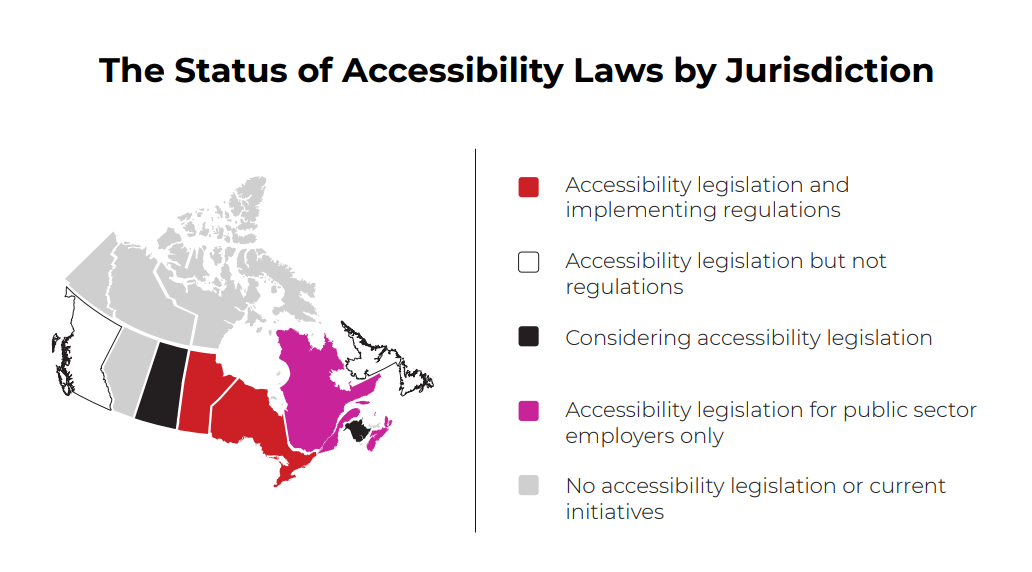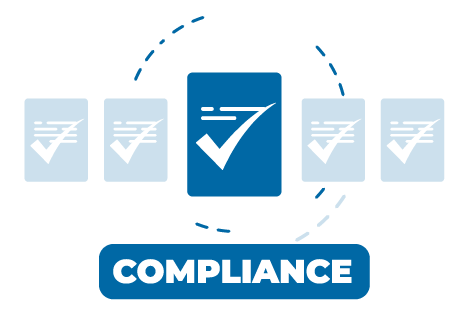Accessibility
Unlocking the Digital World: A Guide to Website Accessibility
September 12, 2023 | Update Your Policy
In today’s digital era, ensuring accessibility for all is more important than ever. Websites, being our primary portals to the vast world of the internet, need to be accessible to everyone, regardless of any disabilities or limitations they might have. This guide takes into account accessibility laws across Canada will walk you through the core standards and actionable strategies to make your website accessible to all.
WCAG Standards & The Principles of POUR
The World Wide Web Consortium (W3C) introduced the Web Content Accessibility Guidelines (WCAG) which is organized by levels of accessibility, starting with A and progressing in stringency to AA and AAA. To be truly accessible and to comply with most accessibility laws, websites must achieve at least level AA.
But what does it mean for web content to be accessible? The WCAG standards revolve around the principles of POUR:
P-Perceivable: Information and user interface components must be presentable to users in ways they can perceive. Users must be able to perceive the information presented; it shouldn’t be invisible to their senses. To achieve this:
- Provide text alternatives for non-text content.
- Offer captions and other alternatives for multimedia.
- Create content adaptable for assistive technologies without loss of meaning.
- Enhance visibility and audibility of content.
O-Operable: The interface and navigation must be user-friendly. It shouldn’t rely solely on interactions that some users might find challenging, such as mouse-only navigation. Key strategies include:
- Ensuring all functionalities are available from a keyboard.
- Giving users ample time to read and interact with content.
- Avoiding content that could cause seizures.
- Assisting users in navigation and content discovery.
U-Understandable: Both the information and the interface’s operation should be comprehensible to users. This involves:
- Making text readable and clear.
- Ensuring content appears and operates predictably.
- Helping users rectify and avoid mistakes.
R-Robust: The content should be accessible and interpretable reliably by users, especially those using assistive technologies. It’s essential to:
- Enhance compatibility with current and future user tools.
- Guarantee content remains accessible as technologies evolve.
Practical Strategy to Make Your Website Accessible
Website accessibility sounds ideal, but how do we bridge the gap between current website conditions and full accessibility? The journey begins with an audit of your existing website, identifying areas of potential inaccessibility. Jump to common questions for a deeper understanding of some frequent concerns and their solutions.
Common Queries on Accessibility and Compliance
With the topic of accessibility gaining momentum, many questions arise related to compliance, strategies, and best practices. Here are some common queries:
How can I provide feedback or report accessibility issues?
If you have concerns about a specific business’s approach to accessibility or their service to people with disabilities, it’s best to contact the business directly. Written feedback or reports on suspected AODA violations can be sent to accessibility@ontario.ca.
Who can assist with questions on building accessibility?
The AODA focuses on accessibility in public spaces, while the Ontario Building Code addresses building accessibility. For guidance on building enhancements for accessibility, your local municipality’s Planning Department is a good starting point.
Is signing support mandatory for hosted events?
Section 12 of the Information and Communications Standard mandates organizations to provide or arrange accessible formats and communication supports upon request. When such a request arises, organizations should collaborate with the individual to address their needs. This could involve providing accessible formats like HTML, MS Word, Braille, or even sign language interpretation.
Making your website accessible is not just about compliance; it’s about inclusivity, ensuring that everyone, regardless of their abilities, can access and benefit from the digital world. Dive deep into the world of accessibility and open your digital doors to all. To keep yourself updated on the latest laws and regulations on website accessibility watch HR Insider’s recorded webinar “Website Accessibility: Demystifying WCAG 2.0 and Other Best Practices” presented by our experts Paul Boshyk, Marcello Cortana, and Symon Oliver.








